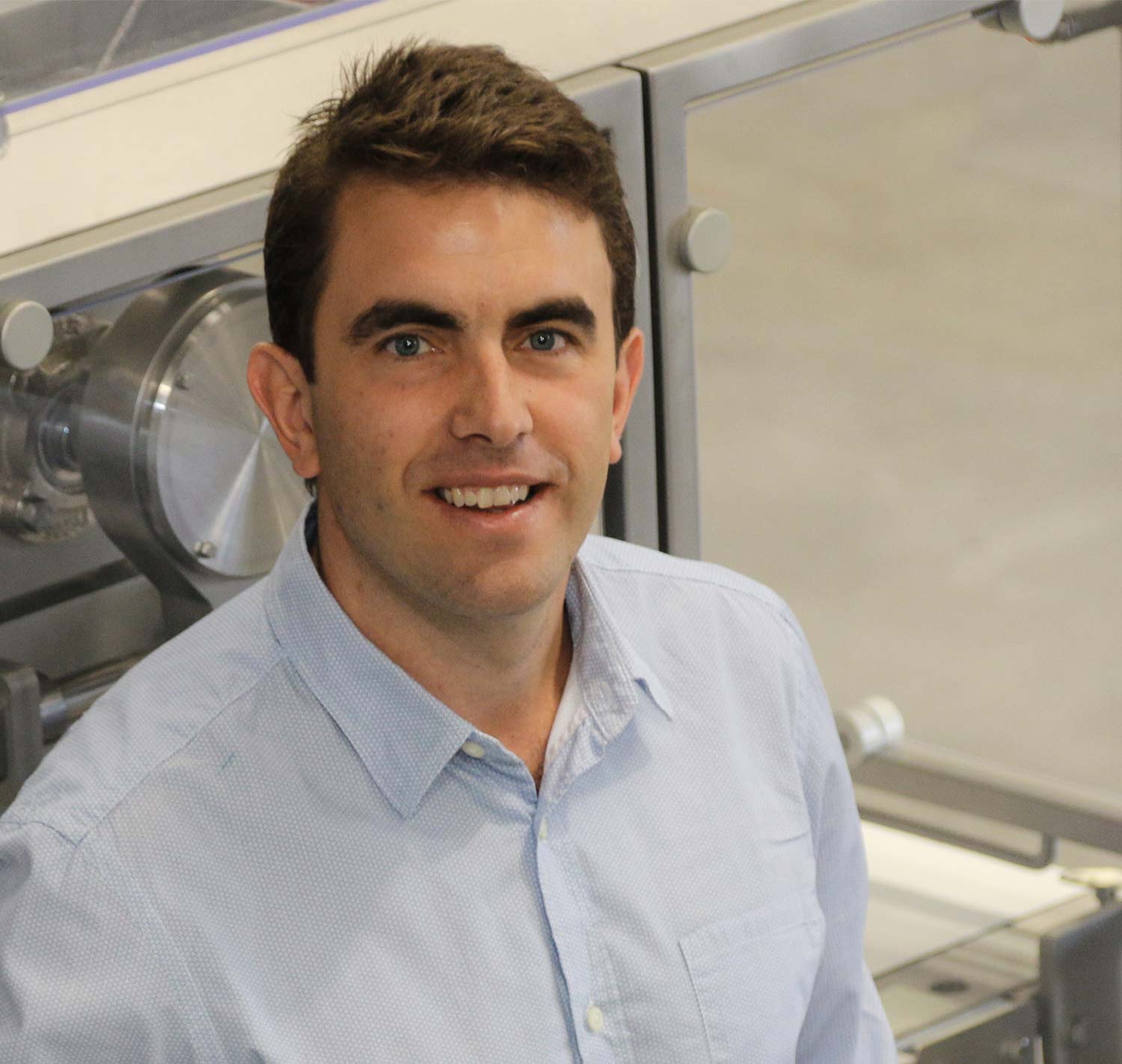TOMRA and CEPI define the need for up-to-date process control and automation when improving efficiency, quality, hygiene and flavour of confectionery products in its manufacturing
Swizzels Matlow, one of the longest-running sugar confectionery manufacturers in the world, is one of TOMRA’s satisfied customers. TOMRA installed a Nimbus free-fall optical sorter in their factory in the United Kingdom to automate the sorting process of the “Drumstick Squashies” to increase production to meet growing demand while ensuring consistently high quality and safety of the product. The system has been running for more than a year with excellent results.
Matt Whatcott, Business Unit Manager (Jellies) at Swizzels, affirms: “Before using a TOMRA sorter, we used manual labour to remove any imperfect sweets that may have been created during the process. The task was challenging due to the manual inspection operators’ sweets passing with one side face-down on a conveyor. This meant that it was not always possible for them to identify a defect as the inspection only covered around 60% of the sweets’ surface area. The inspection task was also monotonous, meaning that focus could wane over time. TOMRA’s Nimbus has enabled us to establish a more automated production line with greater rigor around our product’s quality inspection. We have much higher confidence in our ability to supply sweets that are only of the optimum standard to our consumers.”
Extensive and reliable process automation ensures that the end-product is hygienic. Greater automation also reduces the health risks inherent when people have to work closely together. The more reliable the automated system is, and the more production steps it takes care of, the less manual intervention there is, reducing contamination risk. And process control doesn’t only monitor the process; it also allows optimisation of the production line based on real-time data, which further reduces interventions.
The simple, intuitive control of processes by operators is very important to TOMRA. Ideally, employees interact by using automatically-generated data to improve processes and settings quickly. TOMRA Food has enhanced this data-driven fine-tuning even further by introducing TOMRA Insight, their optional, cloud-based data platform which can monitor sorting machines in real-time. This provides graphical statistics about the machine and line performance, remote access, and easy ordering of spare parts.
Automation protects flavour and hygiene
Confectionery productions require technologies that provide high levels of accuracy in weighing, dosing and tracking processes, to ensure quality and safety in high volume productions. Operations must be efficient and reliable, with dosing equipment that can deliver homogeneity and a process that protects the unique flavour of each product, minimises consumptions and waste, and ensures compliance with hygiene and food safety regulation. The automation allows control on parameters such as temperature, pH, atmosphere, which is crucial in preserving the properties of ingredients such as flour or fats.
CEPI provides a fully integrated automation of their bulk-handling systems, with production management through multiple operator panel solutions such as customised 4-15’’ operator panel on Siemers or Allen Bradley platform for non-typical processes, CEPI native PLC Leonardo for typical processes and weighing processor WP140 with LCD display for simple one line productions. Their native software Tracking System provides process control, warehouse management and full traceability with production statistics and data management, as well as total information exchange through SQL database and communication with ERP or MES. Weighing control in real time is provided for all their storing and dosing stations, along with the management of all other variables involved such as temperature and pH.
Each of the automation systems is fully customised to match analysis of raw materials, site evaluation, environment and consumptions, and designed through a comprehensive study of the manufacturer’s processes. This regards all operations from warehouse to marketing in order to allow the inclusion of future projected productions. Hardware and software design is done completely in-house, which allows them to provide technical and human continuity through the development of a project that can become very specific and complex.
Traceability is key
Stefania Montalti, Communications Manager of CEPI spa says:

“Automatising the dosing system will improve working conditions and eliminate human error, optimise space in the production area and the warehouse and reduce consumptions and pollution. An automated dosing system is more hygienic, with total separation between production and warehouse, and enhances traceability of materials and processes, communication with other software and ERP. Because of the very close and personalised analysis we do when designing a dosing system and the flexibility of our process, our solutions are easy to adapt or expand with addition of new ingredients.
We are seeing an increasing push towards vertical integration of production data beyond those regarding materials, like data on energy consumptions or compressed air, or anything that is useful to establish the exact value of a product.
The automation CEPI develops matches this demand by providing total interconnection and information exchange. We can send and receive information to and from any third party in the line. Our solutions provide full horizontal and vertical integration, managing dialogue and data among our devices and those of other partners, after the dosing and before the raw ingredients management. All our data can be easily integrated with global ERP to achieve organisation-wide traceability. It can generate important information for not only for the production departments and management, but for departments such as Quality Control (lot usage information for each raw material) and Purchases (schedule of raw material purchase, spare part purchase).
The move toward a total digitalisation extends to a preference for remote control of all operations, from any location and on all devices such as smartphones and tablets, which CEPI is already providing alongside with remote commissioning, maintenance and monitoring.
Our automation team provides full 24/7 remote support on all tools with live visualisation on VPN network, management of production and intervention on the source code. Testing, optimisation, start-up and training have long been delivered remotely, as well as virtual and personalised tutorials and live assistance with dedicated devices.”
The complete traceability of all ingredients is fundamental to achieve hygienic productions. CEPI’s native software Tracking System provides complete traceability of all powdered and liquid ingredients. This covers the digitalisation of all movements, lot control with barcode system and warehouse management, which greatly enhances food safety and the optimal management of related alarms. Receiving and visualising data from the operator panels managing the production, Tracking System creates a history of storing and recipe production operations, providing production analysis with statistics of ingredient consumption, batch report with deviation analysis, stock visualisation and dynamic graphics illustrating product, recipe or lot trends.
As well as this, automated systems allow remote control of all operations, ensuring that loading and production operations are completely hygienic and shielding against contamination. Both digitalisation and automation also protect operators’ safety by making distancing easier.
CEPI’s systems are tailored to the needs of each process, with flexible management that allows a manual option for all operations, while still supplying all necessary weighing and dosing information such as weights, times and temperatures. However the general preference is for automated operations. Even during automatic productions, operators in possession of the required authorisation level can always intervene to stop or adjust the process, for example by changing a recipe on the fly. All utilities can be commanded manually during maintenance.
In an increasingly digital world, and with greater advancements in technology, automating processes has been an effective way to efficiently produce confectionery products that are hygienic, without fault and full of flavour.
Nick Halliday, Managing Director of PTL Systems says:

“PTL recently installed a new automated production system for a well-known artisanal confectionery producer in the USA. The client has been making a popular seasonal chocolate product by hand for over 20 years. The manual production process required dozens of highly skilled workers which was both slow and costly. PTL was approached for a solution to meet increasing demand while maintaining the high quality they are famous for.
Industry trends such as SKU pressure have resulted in shorter production runs needing quick changeovers, massive demand for bars and confectionery products and first class clean label and sanitation requirements. Fewer operators will be responsible for more product throughput, variety and higher quality than ever before. We want PTL systems to enable a partnership between humans and machines for optimal outcomes. The COVID-19 pandemic also highlighted the need for effective remote support to maintain productivity during lockdown conditions. The network architecture on PTL systems allows for fast and efficient remote support while maintaining our clients’ network security.
A core part of PTL’s philosophy is a collaborative approach to projects with our clients. Every application is unique and we create innovative machinery together. We are excited about the potential of working even more closely with our clients by harnessing remote working technology. Being part of the Cocoa Association of Asia also helps us understand where the industry needs are.”
Christian Hofsommer, Area Sales Manager and Confectionery Expert at TOMRA Food says:
“TOMRA Food uses advanced technology for the reliable sorting of sweets. And TOMRA’s laser scanners identify contaminated products or foreign materials in product streams that are not visible to the naked eye, as well as checking product colour and structure. When augmented by an Advanced Foreign Material Detector, sorting can be supplemented to include product-specific properties. TOMRA has developed special high-resolution cameras for optical food sorting based on colour and outline. A further module for shape recognition ensures that, through scanning, individual products comply with the desired dimensions and shapes.

One of two TOMRA solutions offered for confectionery applications is the Nimbus free-fall sorter. The Nimbus stands out for its capability to sort a variety of products – such as sugar-free, with-sugar, and multivitamin sweets – with a variety of programs and applications, all on the same platform. This solution is especially in demand in European markets, where factories produce various confectioneries and need to ensure a product free of cross-contamination.
The other solution well-suited to confectionery is the Genius optical belt sorter. This uses advanced high-resolution camera and laser technologies in different inspection zones to reliably detect cross-contamination, starch, and foreign materials and identify clumping and misshapen products. This model is popular in the North American market, where confectionery factories tend to focus on a single product and require the identification of foreign objects and the shape analysis the Genius provides.
TOMRA sorters have the flexibility to sort a wide variety of products in different states. Each product has different characteristics and properties which must be assessed. To ensure product consistency, our machines can sort by colour, product characteristics and shape. And the exceptionally high accuracy of our machines means that defect ejection is accomplished with minimal product loss.
Expectations for product quality and product safety will continue to rise, both from food retailers and end customers. This means production monitoring, automation, and optical sorting are all becoming more important. Larger companies are investing in the technologies to do this. And because smaller companies can find the investment in automated optical sorting a big step in itself, we believe they must be given the opportunity to keep options open through retrofits.
Another important trend is the increase in online orders. This is shortening supply chains and reducing control mechanisms. So now it is all the more important that when products leave the manufacturer’s factory, they are fault-free.”
To stay up to date on the latest, trends, innovations, people news and company updates within the global confectionery market please register to receive our newsletter here
Media contact
Kiran Grewal
Editor, International Confectionery
Tel: +44 (0) 1622 823 922
Email: [email protected]









